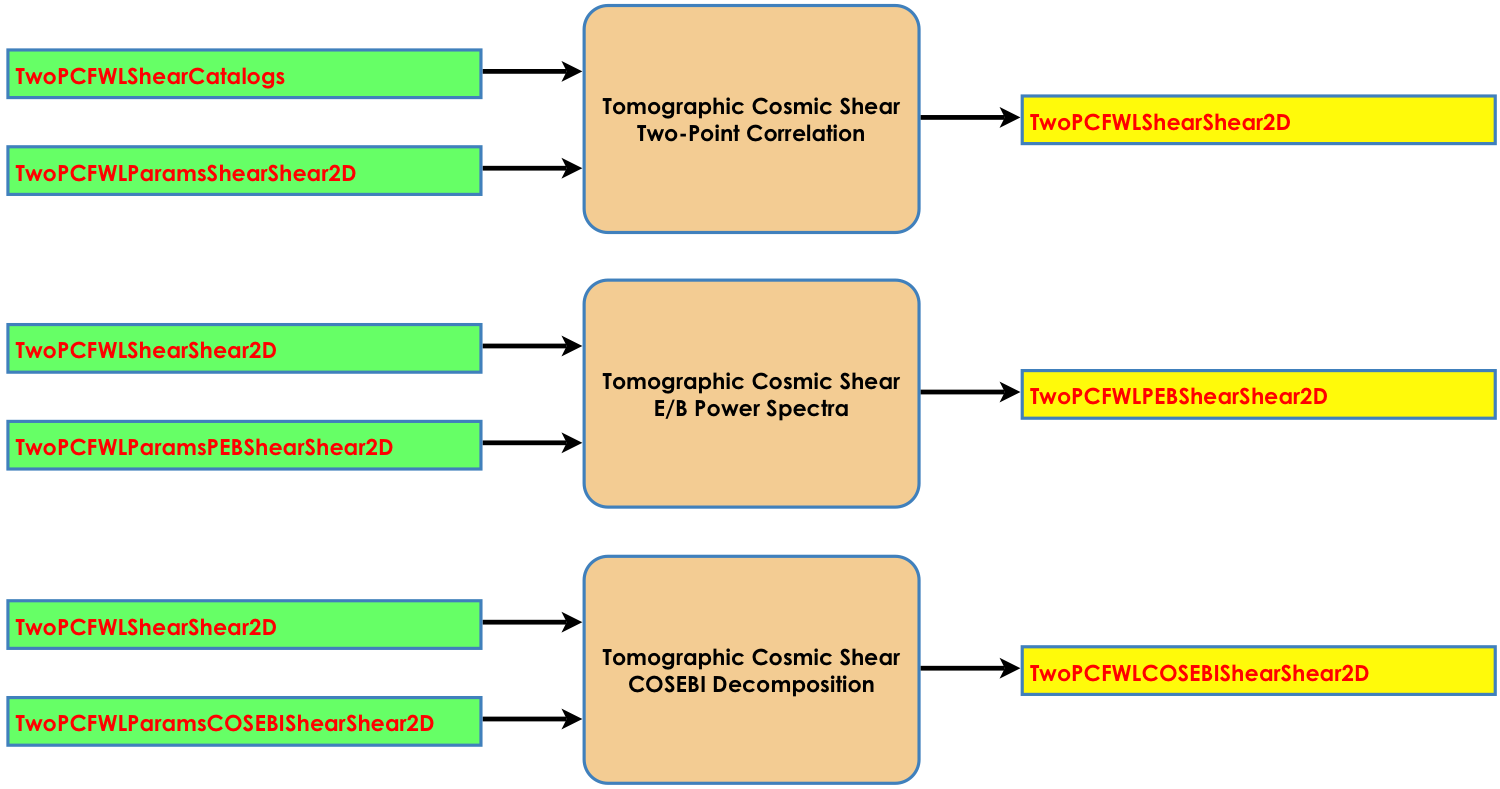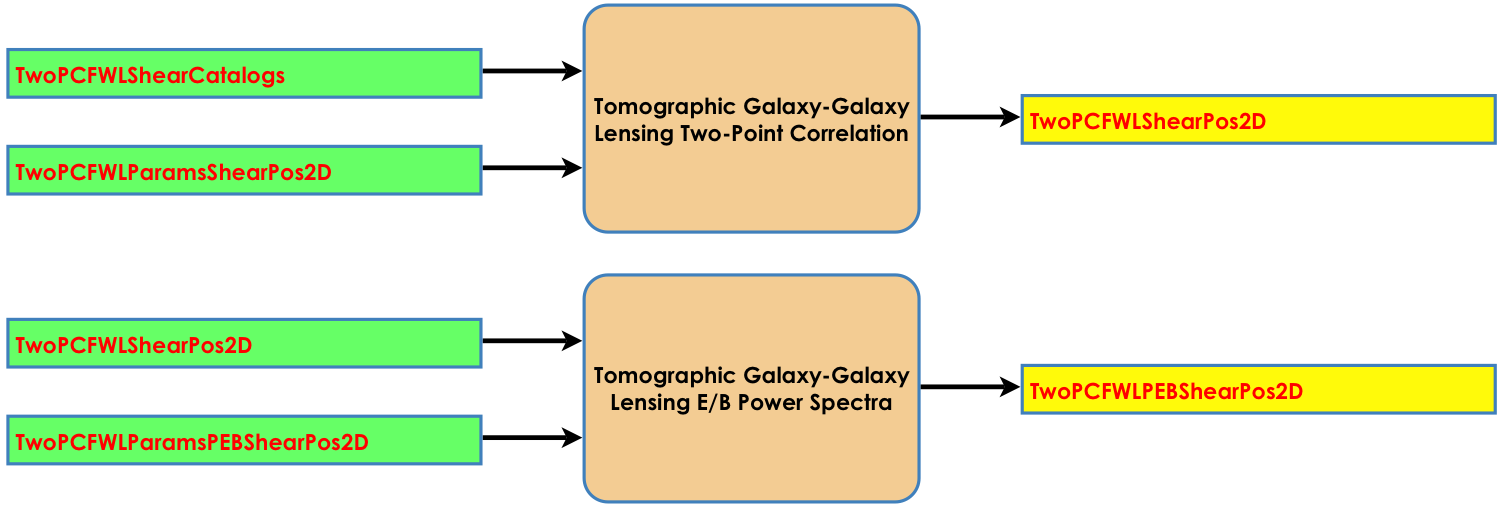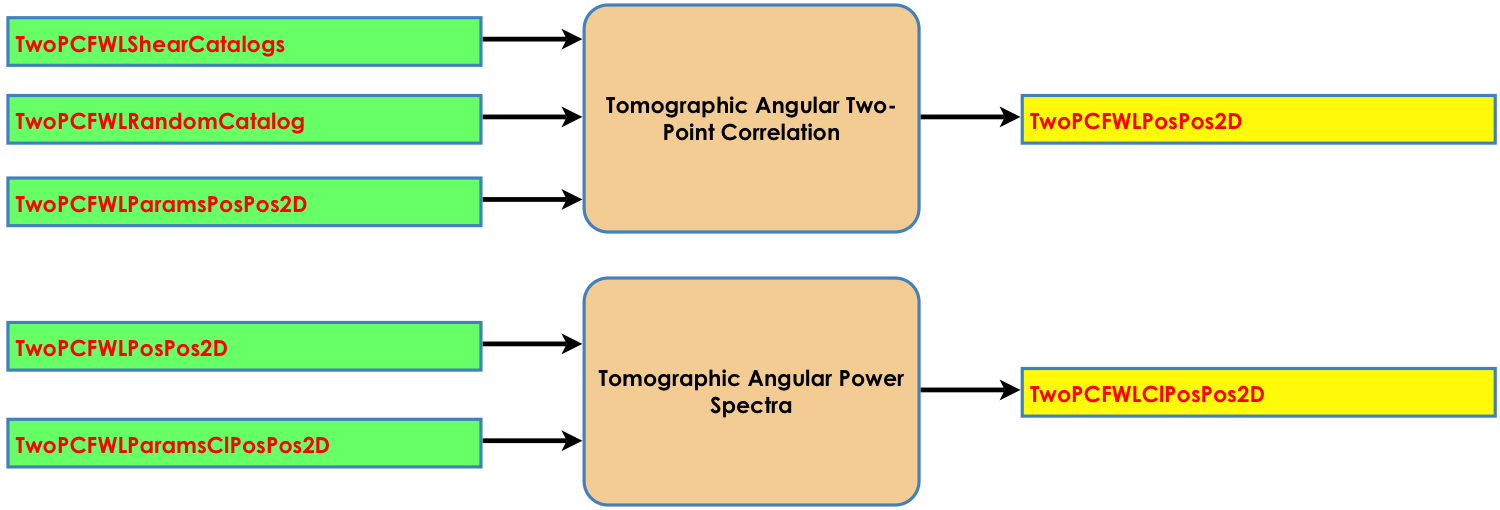


Introduction¶
From the SHE/PHZ catalog WLLensMCCatalog, the 2PCF-WL PF will provide the following output products:
The 3x2PCF: the tomographic cosmic shear 2PCF, the tomographic galaxy-galaxy lensing 2PCF and the tomographic angular 2PCF using the random catalog
The 3 spectra: the tomographic E/B cosmic shear spectra, the tomographic E/B galaxy-galaxy lensing spectra and the tomographic angular spectra
For cosmic shear, the COSEBI decomposition
Optionally, if selection is different for the lens galaxies than for the source galaxies, a MER/PHZ position catalog WLPosCatalog.
In the following, we first present tomographic cosmic shear products, tomographic galaxy-galaxy lensing products and finally tomographic angular products.
Tomographic cosmic shear¶
To derive the tomographic cosmic shear 2PCF, an input fits catalog WLLensMCCatalog collecting information from SHE/PHZ is needed. Running parameters are collected in TwoPCFWLParamsShearShear2D for cosmic shear correlation, specifying in particular the binning, open angle used by the algorithm.
Once the 2PCF TwoPCFWLShearShear2D is computed, with running parameters TwoPCFWLParamsPEBShearShear2D, the tomographic E/B cosmic shear power spectra TwoPCFWLPEBShearShear2D can then be computed.
Finally, from the 2PCF TwoPCFWLShearShear2D and parameters TwoPCFWLParamsCOSEBIShearShear2D, the COSEBI decomposition TwoPCFWLCOSEBIShearShear2D can be computed as well.
The flowchart is described in the following:

Tomographic galaxy-galaxy lensing¶
To derive the tomographic galaxy-galaxy lensing 2PCF, an input fits catalog WLLensMCCatalog collecting information from SHE/PHZ is needed and (optionally) a MER/PHZ position catalog WLPosCatalog. Running parameters are collected in TwoPCFWLParamsPosShear2D for galaxy-galaxy lensing correlation, specifying in particular the binning, open angle used by the algorithm.
Once the 2PCF TwoPCFWLPosShear2D is computed, using running parameters TwoPCFWLParamsPEBPosShear2D, the tomographic E/B galaxy-galaxy lensing power spectra TwoPCFWLPEBPosShear2D can then be computed.
For galaxy-galaxy lensing, the flowchart contains is then described in the following:

Tomographic angular correlation¶
To derive the tomographic angular 2PCF, an input fits catalog WLLensMCCatalog (or a MER/PHZ position catalog WLPosCatalog) collecting information from SHE/PHZ is needed, as well as a random catalog WLRandomCatalog originating from VMPZ-ID. Running parameters are collected in TwoPCFWLParamsPosPos2D for angular correlation, specifying in particular which estimator is chosen.
Once TwoPCFWLPosPos2D is computed, using running parameters TwoPCFWLParamsClPosPos2D, the tomographic angular power spectra TwoPCFWLClPosPos2D can then be computed.
The flowchart is the following:

Inputs products
Input Product: Parameters for Tomographic Cosmic Shear COSEBI
Input Product: Parameters for Tomographic Galaxy-Galaxy Lensing EB Power Spectra
Input Product: Parameters for Tomographic Cosmic Shear E/B Power Spectra
Input Product: Parameters for Tomographic Galaxy-Galaxy Lensing 2PCF
Outputs products
